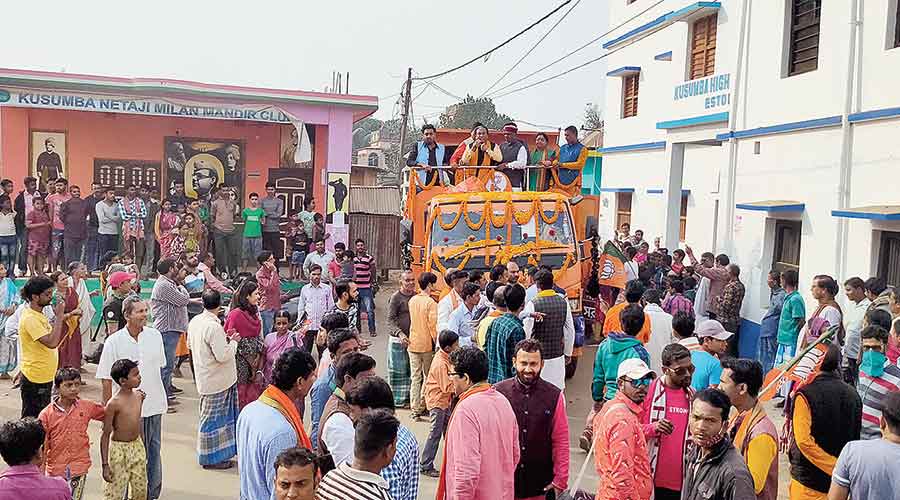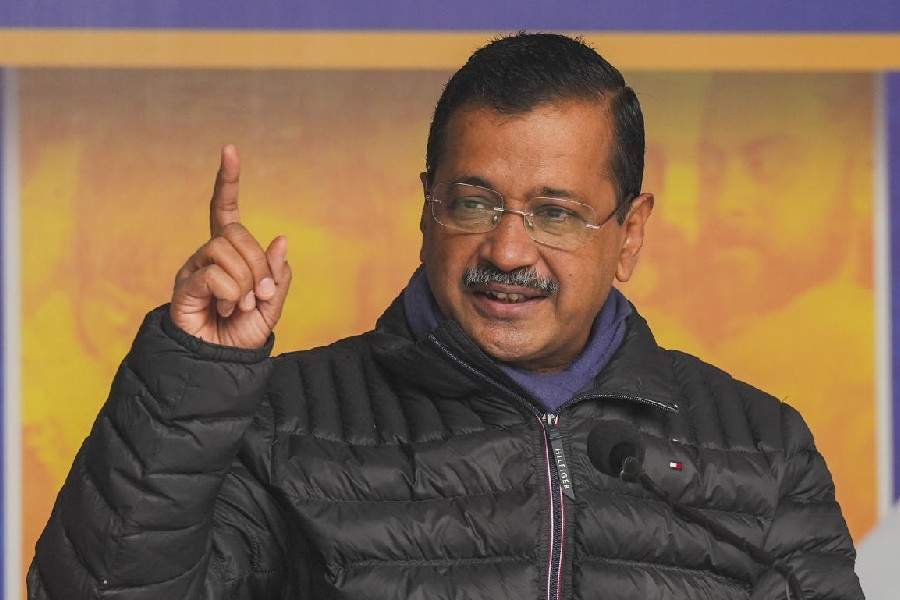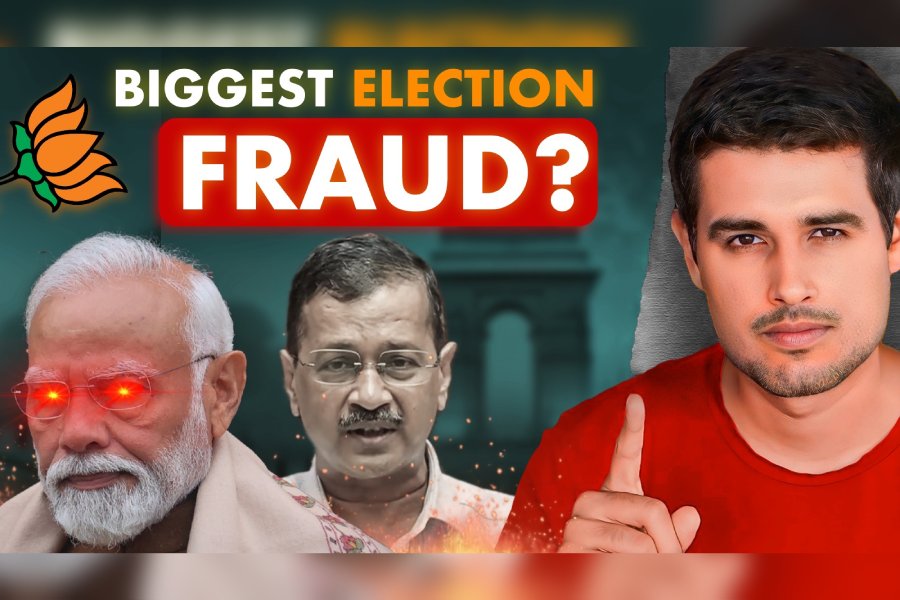Barely 200 people turned up to catch a glimpse of the BJP’s Parivartan Yatra in Rampurhat on Wednesday with questions being raised on the party’s ability to strike a chord with Bengal where the “chariot” used for the procession generally denotes devotion and not the muscle power that the saffron camp seeks to highlight through the ride.
The second leg of the procession — the BJP had initially called it rathyatra — had been flagged off on Tuesday by BJP national president J.N. Nadda in Birbhum’s Tarapith, a holy place for Hindus, in the presence of over 4,000 people.
After covering 90km, the decorated air-conditioned bus — billed as the rath that will usher in change in Bengal — reached Rampurhat’s Kusumba village, where the home of chief minister Mamata Banerjee’s maternal uncle is located.
Hardly 200 people waited at Kusumba Netaji Milan Mandir Club to welcome the cavalcade that included the chariot and some vehicles. The man who flagged off the yatra was missing. So were prominent Bengal BJP leaders, who were seen pushing and shoving each other barely 24 hours ago to be in the same frame with Nadda at Tarapith.

The thin crowd at the Kusumba village near Rampurhat on Wednesday to receive the “rath”.
“I inaugurated the first yatra (on February 6) from Nadia’s Nabadwip and it is the second. This will bring about a change in Bengal by removing the Mamata Banerjee government,” Nadda boasted as he flagged off the second yatra from Tarapith.
Around 5,000 people were present when he launched the third leg of the yatra at Jhargram on Tuesday evening.
In the absence of the leaders at the Rampurhat village in Birbhum district, the foot-soldiers also kept away, robbing the yatra of the excitement with which it had rolled out.
The low turnout has raised questions on whether the decision to hold the rathyatra was right. More importantly, some BJP insiders are asking whether the party has the organisational capability to pull off such a show in Bengal. The questions have become more pertinent as Union home minister Amit Shah is scheduled to flag off the north Bengal leg of the yatra from Cooch Behar on Thursday.
The rath culture has been an integral part of the BJP’s politics since its patriarch L.K. Advani took out a rathayatra in 1990 demanding Ram temple at Ayodhya and the spectacle resulted in electoral gains for the party as its vote share went up to 20.1 per cent in 1991 from 11.4 per cent in 1989. The BJP polled around 9.5 per cent votes — up from 1.5 per cent in 1989 — in 1991 in Bengal.
Following the Advani model, some BJP insiders said, poll strategists in Delhi planned the ongoing rathyatra ahead of the Assembly polls. “The presence of senior leaders is creating excitement at the launch of the yatra and then, it’s dissipating,” said a BJP insider.
Some social scientists this correspondent spoke to said the expectation that the rathyatra would evoke excitement in Bengal might have been misplaced because of the cultural gap with northern India.
“Advani’s rathyatra might have been successful in other parts of the country, but as far as I can recall the discourse those days, it symbolised the muscle power of patriarchy, whereas people of Bengal have mostly been devoted to the goddess or the power of a mother,” said Apurba Mukhopadhyay, a retired professor of political science at Burdwan University and Netaji Institute for Asian Studies, Calcutta.
“I think there is a basic difference of culture between rathayatra in northern India and Bengal. In north India, a chariot represents wars or valour of the fighters, whereas in Bengal and some parts of eastern India, a rath is devotional as deities used to ride on it. It’s unlikely people of Bengal will relate to a rath carrying political leaders.”
Taramoy Mukherjee, president of Tarapith temple committee, explained the concept further and said for most Bengalis, a rath means the rath of Mahesh, on which Lord Jagannath (also known as the lord of the universe), Lord Blabhadra and Maha Devi Subhadra take a ride or the rath that goddess Tara of Tarapith takes once every year.
“Hardly a few people from our temple went to participate in the ongoing rathyatra. For most of us, rath is for the deities,” he said
Surajit Mukhopadhyay, a professor of sociology at Amity university, said while an attempt to reach out to voters through a state-wide road show couldn’t be faulted, calling it the rathyatra didn’t fit with the psyche of people in Bengal.
“The BJPs failure to understand Bengal’s culture is exposed. If they had any idea, they wouldn’t have drawn up such a plan,” he said.
A BJP insider said the discourse might have prompted the party to call it a Parivartan Yatra, but most supporters are calling it rathyatra. “Whenever party workers call
us up to know the location of the decorated bus, they refer to it as a rath. That’s why ordinary people also think it’s a rath.”











